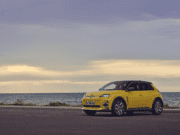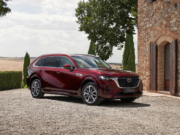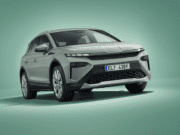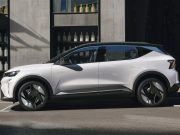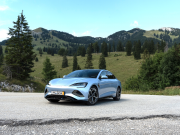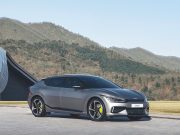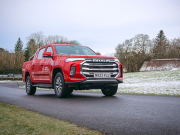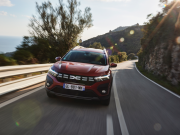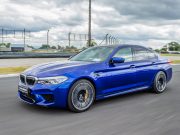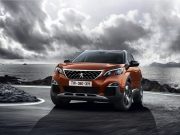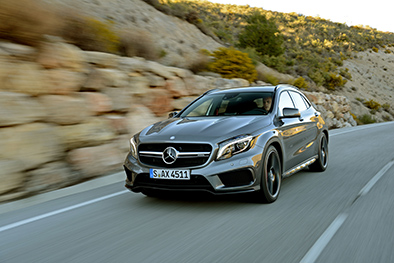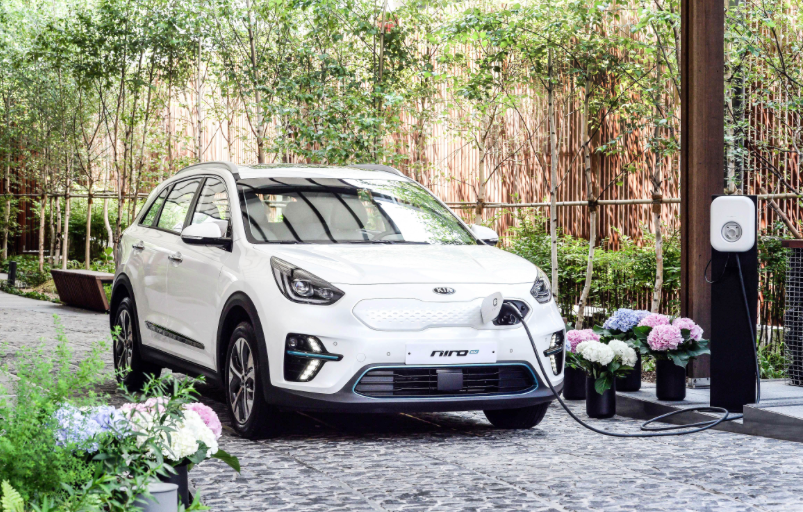
The new Kia Niro EV has gone on sale in Korea, combining an all-electric, zero-emissions powertrain with crossover practicality, intelligent packaging and eye-catching design. A long-distance driving range of up to 450 kilometres (280 miles)* makes it one of the most capable electric vehicles on sale anywhere in the world. The Niro EV occupies a unique position in the global market as an all-electric crossover, and sits alongside the existing Hybrid and Plug-in Hybrid variants of the car – of which more than 200,000 have sold globally since the Niro’s introduction in 2016 (including more than 65,000 European sales). The Korean carmaker has received more than 5,000 pre-orders for the Niro EV in its domestic market since the car was first revealed earlier this year. The Niro EV is to be Kia’s second globally-sold electric vehicle after the Soul EV. The new model will make its European debut at the 2018 Paris Motor Show this October, and will go on sale in Europe by the end of 2018.
450-kilometre range from next-generation EV powertrain
Matching its sporty, crossover design, the Niro EV offers buyers long-distance, zero-emissions driving ability and enjoyable performance with a next-generation electric vehicle powertrain. A high-capacity 64 kWh lithium-polymer battery pack affords a driving range of up to 450 kilometres (280 miles) on a single charge with zero emissions. Plugged into a 100 kW fast charger, it takes 54 minutes to recharge the Niro EV’s battery to 80%. Buyers will also be able to specify an optional 39.2 kWh lithium-polymer battery pack, with a range of up to 300 kilometres (186 miles) from a single charge. Power is provided to the front wheels through a 150 kW (204 ps) motor, producing 395 Nm torque from a standstill, for acceleration from 0 to 100 kph in just 7.8 seconds. The battery pack is located low down in the body, beneath the trunk floor, creating a centre of gravity more akin to that of a sedan or a hatchback, ensuring maximum stability and driving enjoyment on winding roads.
Advanced Driver Assistance Systems to support convenience and safety
Matching the forward-looking nature of its powertrain, the Niro EV offers drivers a range of Kia’s ‘Advanced Driver Assistance Systems’, supporting the driver in various environments and scenarios to mitigate the risk of a collision. Available active safety systems include Forward Collision Warning with Forward Collision-Avoidance Assist, Smart Cruise Control with Intelligent Stop & Go, and Lane Following Assist. Lane Following Assist is a ‘Level Two’ autonomous driving technology which tracks vehicles in front of the car in traffic, and detects road markings to keep the Niro EV in its lane on the motorway. The system controls acceleration, braking and steering according to the behaviour of the vehicles in front, using external sensors to maintain a safe distance. Lane Following Assist operates between 0 and 130 kph.
Futuristic design inspired by 2018 Niro EV Concept
Designed at Kia’s design centres in California, USA and Namyang, Korea, the Niro EV incorporates the practicality and appeal of a crossover in a sleek, aerodynamic body with subtly sculptured surfaces. The car demonstrates that, in seeking greater on-road efficiency, EV buyers need not sacrifice emotionally engaging design or crossover versatility. The Niro EV differentiates itself from the existing Niro Hybrid and Niro Plug-in Hybrid with a series of exclusive design features. Taking inspiration from the Niro EV Concept unveiled at the 2018 Consumer Electronics Show in Las Vegas, the exterior is based on a ‘Clean and High-tech’ design concept. Its futuristic and aerodynamic ‘tiger-nose’ grille features an integrated charging port, bearing a ‘de-bossed’ Niro logo. Redesigned air intakes and new arrowhead-shaped LED daytime running lights combine with light-blue trim highlights to help it stand out further. In profile, the slim character line and tapered rear windows emphasise the car’s sleek profile, while allowing greater room for the muscular wheel arches. The Niro EV rides on new five-spoke 17-inch aluminium alloy wheels with a diamond-cut two-tone finish, housing Kia’s regenerative braking system.
At the back, reshaped rear bumpers feature similar light blue highlights to those found at the front of the car, while new LED rear lights give the Niro EV its own light signature.
Modern interior with EV-specific technologies and crossover utility
The cabin combines modern design with generous space and technologies that complement the zero-emissions powertrain. The interior of the Niro EV is differentiated from other Niro models with a range of new features and design elements. The dashboard features a new light blue trim, echoing that of the exterior, while the design of the centre console has been simplified to accommodate the car’s shift-by-wire drive selector – Kia’s first ‘dial’-style shift knob. A new mood lighting system illuminates both the centre console and the shifter, and occupants can choose from six colours – white, grey, bronze, red, green, and blue. New high-gloss black and blue trim lines the doors, further enhancing the futuristic atmosphere.
A 7.0-inch touchscreen HMI (human-machine interface) remains at the centre of the dashboard, but has been updated to offer a series of EV-specific features. The new infotainment system enables owners to locate nearby charging points and monitor the level of charge and range remaining from the battery pack. The instrument cluster – a 7.0-inch colour-LCD display – is also unique to the Niro EV, enabling the driver to intuitively check driving and EV powertrain information on-the-move. The redesigned centre console creates more storage space at the base of the dashboard for smaller items – including a wireless smartphone charger. A lamp is integrated into the top of the dashboard, with a light displaying whether the battery pack is recharging or fully charged when plugged in. This enables owners to quickly see the car’s charge status at a glance from outside the car. When the Niro was first launched in 2016, its new platform had been engineered to accommodate a variety of advanced powertrains. Its 2,700-mm wheelbase ensures all occupants have plenty of legroom, while the sense of space is boosted by its crossover design. Its body is 1,805 mm wide and 1,560 mm tall, ensuring maximum head- and shoulder-room throughout the cabin. At 4,375 mm in length, it offers more cargo space – 451 liters (VDA) – than many other plug-in and electric vehicles.





